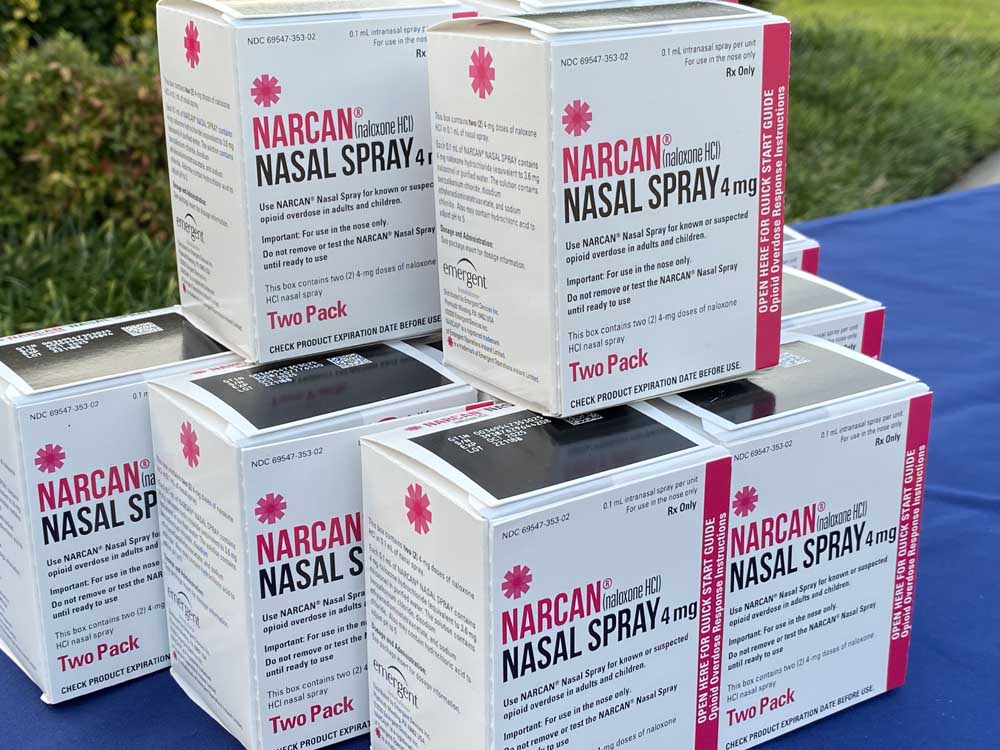PROGRESS 2024: Community efforts essential amid opioid crisis
Published 5:00 pm Friday, March 29, 2024

- IMG_8569
As is the case throughout the United States, the local community is no stranger to the grave consequences of the ongoing opioid crisis.
“According to the data from the Department of Public Health’s Online Analytical Statistical Information System (OASIS), Murray and Whitfield counties have seen increases in opioid-related drug overdose hospitalizations and deaths since 2018,” said Brittney Carmichael, an opioid and substance misuse response coordinator for the Georgia Department of Public Health.
Trending
The leading contributors of the spike in overdose deaths, she said, are potent opioids such as fentanyl and polysubstance use.
Of particular concern, she said, are counterfeit prescription pills — “because the contents and potency of the drug(s) are unknown.”
While opioid use disorder can affect anyone, Carmichael notes that there are several risk factors that can increase the likelihood of someone developing substance use behaviors.
“We know that people who have experienced childhood trauma, intergenerational substance use, have a mental health condition or have low socioeconomic status are more likely to engage in substance use and therefore have an increased likelihood of developing substance use disorder,” she said.
Carmichael said significant substance use and overdose prevention work is happening in Georgia at the moment.
“For instance, state agencies like the Georgia Department of Public Health (GA DPH) and the Georgia Department of Behavioral Health and Developmental Disabilities (DBHDD) have broad, overarching programs that provide things like funding support, data and surveillance, and programmatic approaches to prevention,” she said.
Trending
And on the more local level, she said health districts, nonprofit organizations and other community agencies are serving as “boots on the ground” in the fight to save lives.
“Overdose death and hospitalization prevention from these entities looks like the implementation and dissemination of youth-centered prevention education, the provision of harm reduction services and medication assisted treatment, the education of opioid overdose response and recognition with life-saving naloxone and of course, addiction treatment and recovery,” she said. “Georgia has a strong network of recovery community organizations (RCOs) which provides assistance and community support to those at all readiness of addiction recovery.”
As a result of the opioid epidemic, Carmichael said there have been both consequences and improvements to healthcare in general.
“An example is the improved guidance on opioid prescribing as well as the monitoring of opioid and other prescribed medications through the Prescription Drug Monitoring Program (PDMP),” she said. “The improved guidance and PDMP ensure that providers and prescribers are being intentional and responsible when prescribing an opioid to manage pain symptoms.”
Carmichael said she is also seeing an increase in the co-prescription of naloxone — which can reverse the effects of overdoses — with opioids.
“Providers are not the only ones to recognize that increasing access to naloxone is an effective overdose prevention strategy,” she continued. “The FDA (the U.S. Food and Drug Administration) approved nasal naloxone under the brand Narcan for over-the-counter sales last year. It is now widely available at local retailers without a prescription.”
However, she said the epidemic continues. And it’s evolving.
“On an individual level, healthcare concerns for people who use drugs (PWUD) are infectious disease,” she said. “And with drugs like xylazine in the drug supply, people may be at risk for incurring drug-related injuries as well.”
Xylazine, intended for use as an animal tranquilizer, was declared an “emerging threat” by the White House’s Office of National Control Policy last year. The drug is often mixed with fentanyl and other opioid substances in illegal street sales.
And since xylazine is not an opioid, its potentially devastating effects cannot be reversed by Narcan.
Although there is great work being done in Whitfield County and Murray County, Carmichael said there are still many opioid and substance use disorder issues to address.
“Increasing the number of community partners that worked toward improving the availability and accessibility to affordable treatment and recovery programs would significantly benefit the folks of the area,” she said. “Our community agencies need to work together to collaborate on wraparound services for people with substance use disorders. Our community needs to think about the whole person and what other needs that are not being met so that people can find success in their treatment and recovery.”
Carmichael said that organizations that provide services like housing support, transition, nutrition assistance, child care, mental health treatment and even career services all have important roles to play in helping community members with substance use disorders.
“Furthermore, there is a need for the community to address the stigma around substance use,” she said. “As a community, we need to be asking for information and educating ourselves on the brain disease of addiction and encouraging people to seek services and resources that can improve their health outcomes. It can be difficult to reframe opinions or mindsets about substance use and people who use drugs, but it is important to become allies to those individuals if we want to save lives.”





